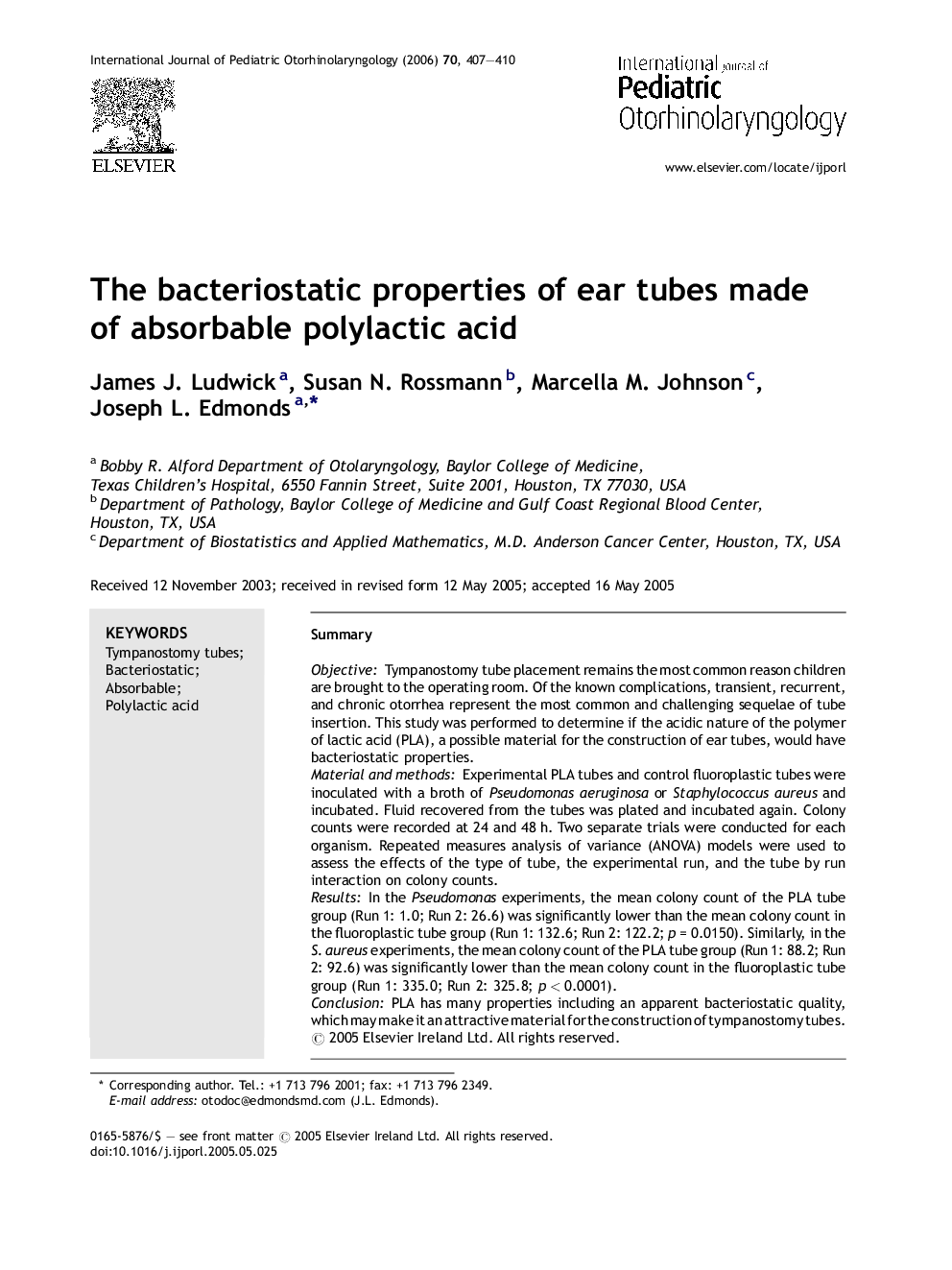| Article ID | Journal | Published Year | Pages | File Type |
|---|---|---|---|---|
| 4115212 | International Journal of Pediatric Otorhinolaryngology | 2006 | 4 Pages |
SummaryObjectiveTympanostomy tube placement remains the most common reason children are brought to the operating room. Of the known complications, transient, recurrent, and chronic otorrhea represent the most common and challenging sequelae of tube insertion. This study was performed to determine if the acidic nature of the polymer of lactic acid (PLA), a possible material for the construction of ear tubes, would have bacteriostatic properties.Material and methodsExperimental PLA tubes and control fluoroplastic tubes were inoculated with a broth of Pseudomonas aeruginosa or Staphylococcus aureus and incubated. Fluid recovered from the tubes was plated and incubated again. Colony counts were recorded at 24 and 48 h. Two separate trials were conducted for each organism. Repeated measures analysis of variance (ANOVA) models were used to assess the effects of the type of tube, the experimental run, and the tube by run interaction on colony counts.ResultsIn the Pseudomonas experiments, the mean colony count of the PLA tube group (Run 1: 1.0; Run 2: 26.6) was significantly lower than the mean colony count in the fluoroplastic tube group (Run 1: 132.6; Run 2: 122.2; p = 0.0150). Similarly, in the S. aureus experiments, the mean colony count of the PLA tube group (Run 1: 88.2; Run 2: 92.6) was significantly lower than the mean colony count in the fluoroplastic tube group (Run 1: 335.0; Run 2: 325.8; p < 0.0001).ConclusionPLA has many properties including an apparent bacteriostatic quality, which may make it an attractive material for the construction of tympanostomy tubes.
